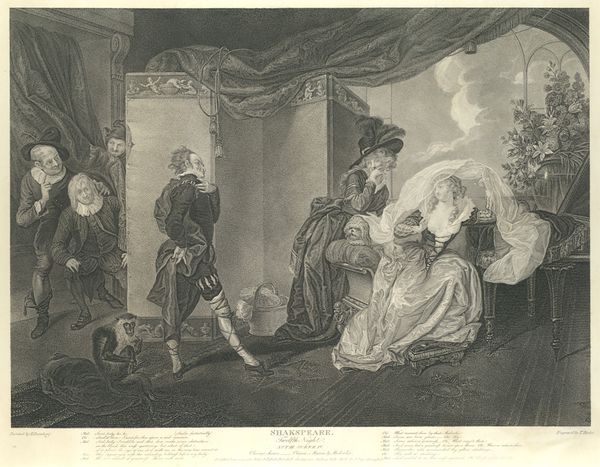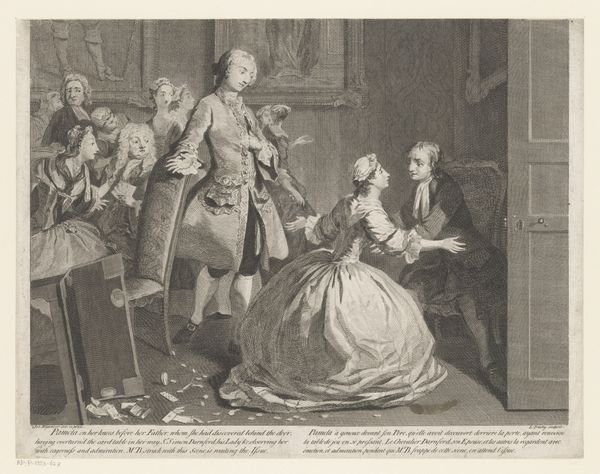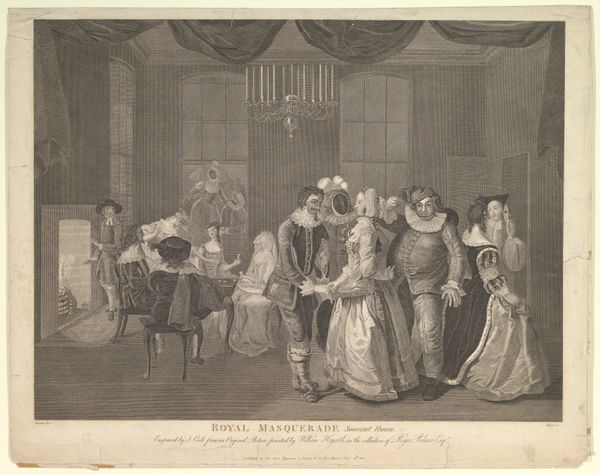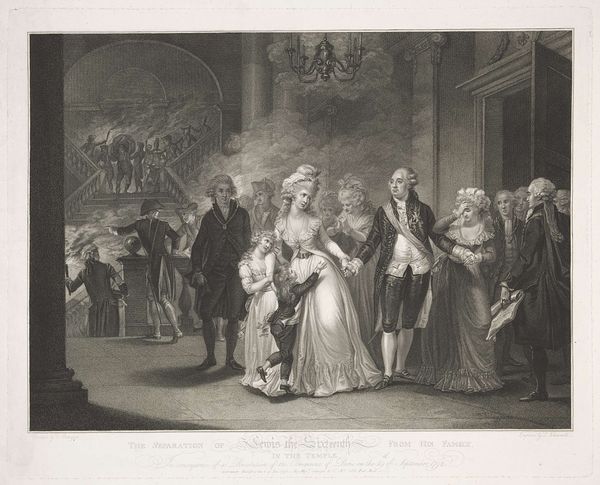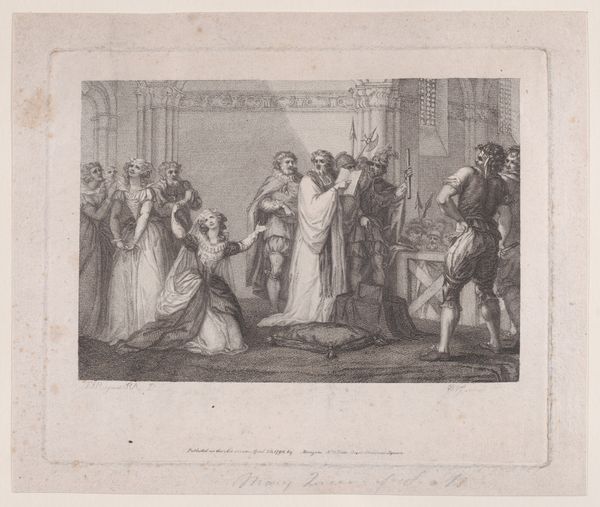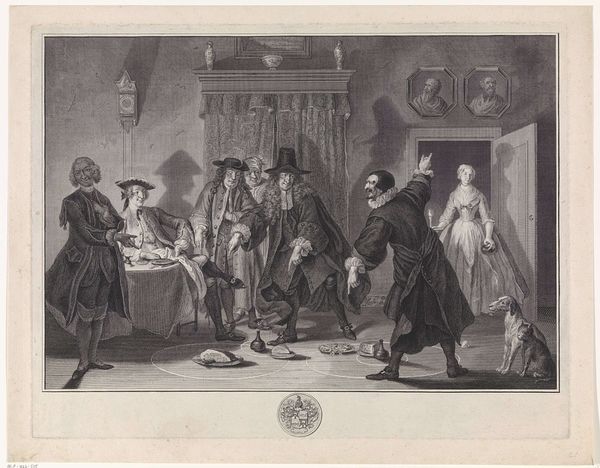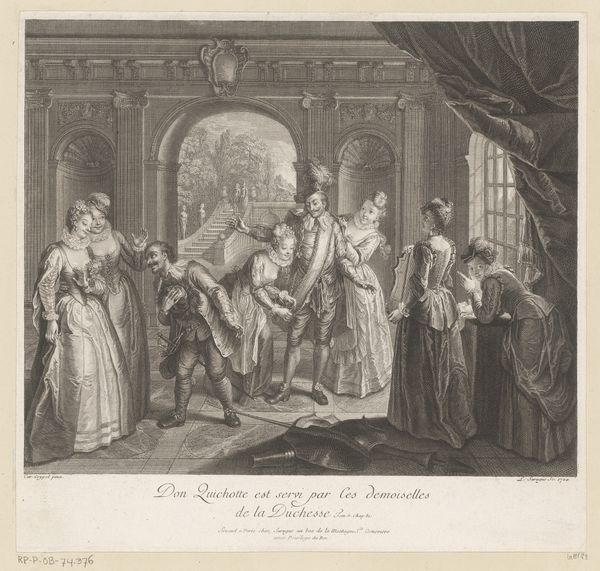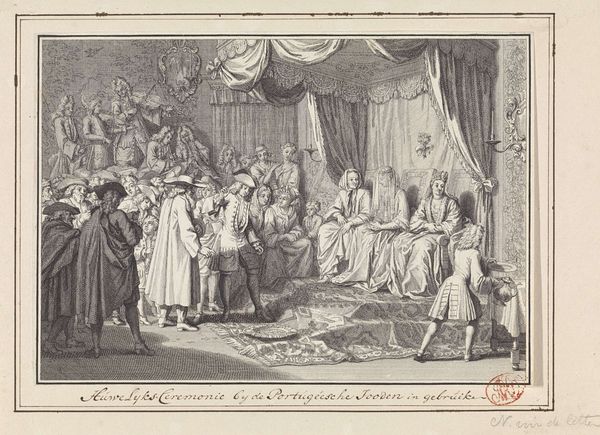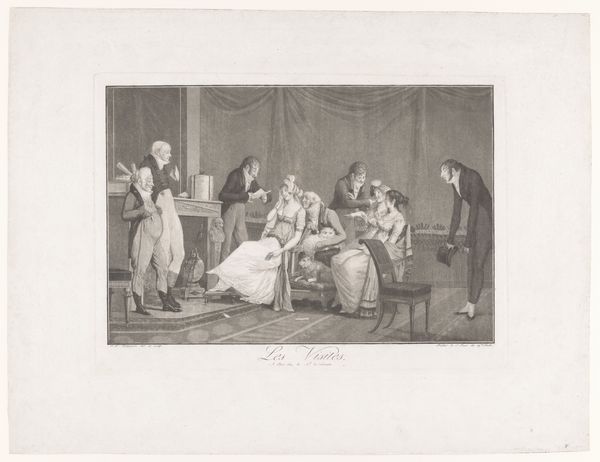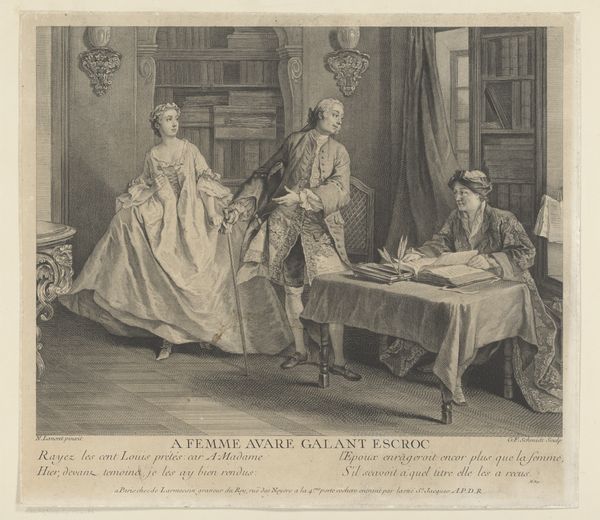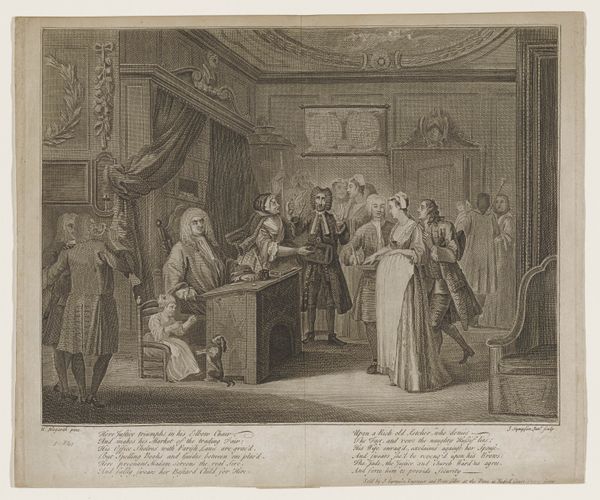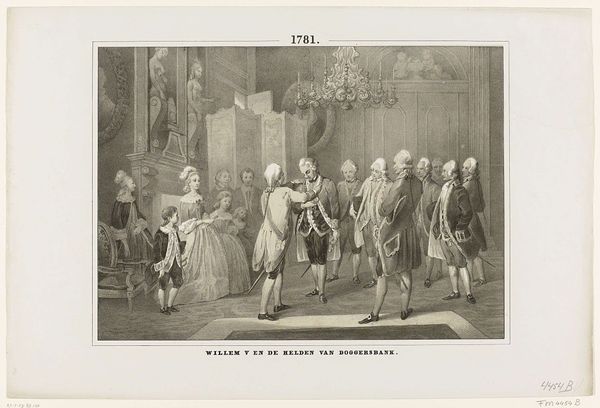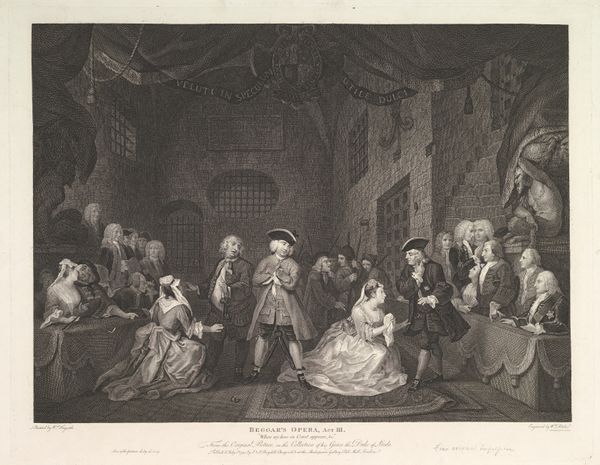
Boucher présenté à Madame de Pompadour (Boucher presented to Madame de Pompadour), from "Le Monde Illustré" 1861
0:00
0:00
Dimensions: Image: 8 1/4 × 10 1/2 in. (21 × 26.7 cm) Sheet: 9 5/16 × 11 1/4 in. (23.6 × 28.5 cm)
Copyright: Public Domain
This is Henry Linton’s “Boucher présenté à Madame de Pompadour, from Le Monde Illustré.” Linton made this image as an engraving, a print-making technique that allows for fine detail and delicate shading. The composition is carefully structured, with the figures arranged to lead the viewer's eye through the scene. Note how the sweeping lines of the room's architecture contrast with the static arrangement of the figures. The artist uses a semiotic system of signs to communicate. For example, the costumes and interiors serve as cultural codes. They signify wealth, status, and historical context. Linton destabilizes traditional portraiture by capturing a fleeting moment of introduction. This challenges the idea of fixed representation. It engages with new ways of thinking about power, representation, and the gaze. Ultimately, it is the formal quality of Linton's graphic style that holds the key to understanding this work. Its sharp lines and tonal gradations are not merely decorative; they actively construct meaning.
Comments
No comments
Be the first to comment and join the conversation on the ultimate creative platform.
